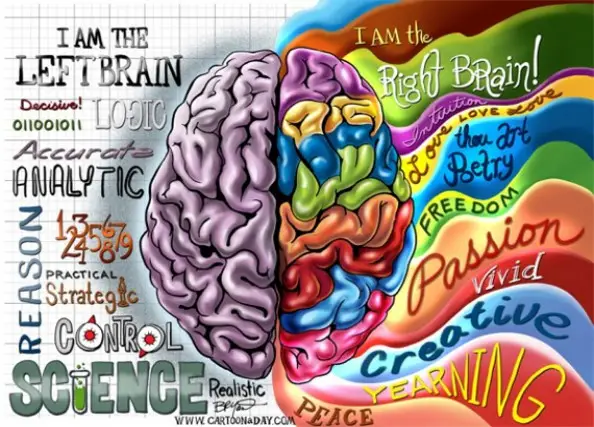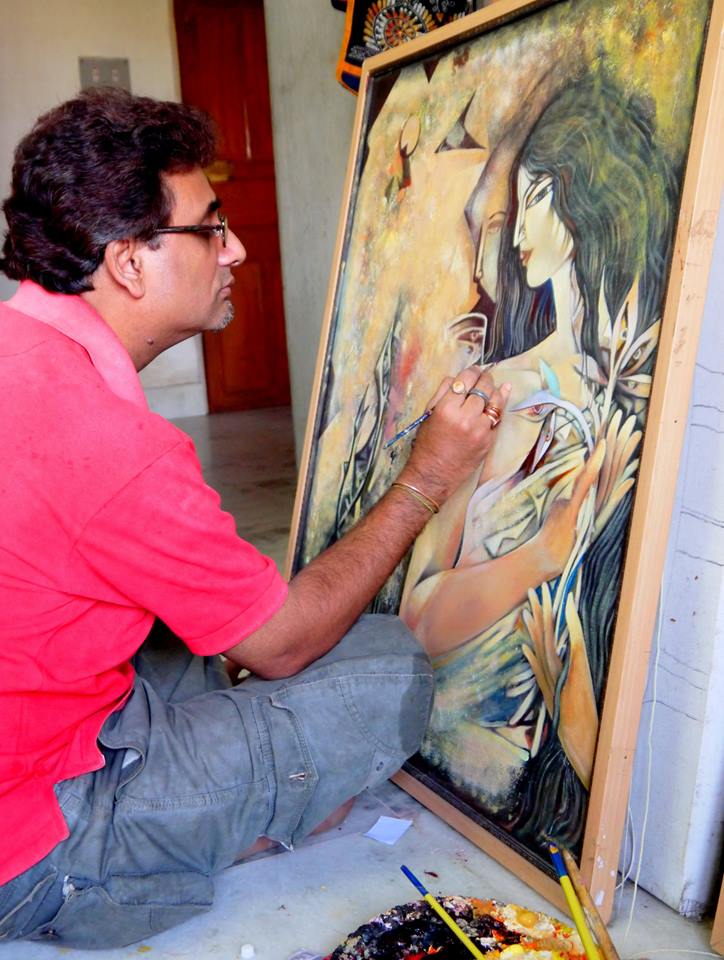Currently Empty: ₹0.00

Author, Dipayan Banerjee
The one element that facilitates art is creativity; the process of formation of something novel – a form unseen or undiscovered yet by humanity but lying dormant in the mind of the artist and eventually turned into reality. Since Aristotelian times, happiness has been usefully thought of as consisting of at least two aspects: hedonia or pleasure and eudemonia or a life well lived. Pleasure may be derived for the experience of creation urged by the mental imaginative capacity. Creative perception, has, by psychologists been associated with conducive environments, perfect collaborators, personality traits, serendipity, and even spiritual muses.
It stands to reason that a willingness to explore and try new things would be correlated with creativity the most important factor, however, is not an external stimulus but the human brain that possesses the capacity to both create and destroy.

A lesser known fact is that psychologists sometimes encourage patients to use artistic expression to confront difficult feelings to distract the mind and keep it happy. Creativity is thus an important key to happiness. In general, activities that require more holistic perception like spatial reasoning, and appreciation of beauty stimulate the right hemisphere and those activities which require more analytical thinking—including language—stimulate the left.
There is a notion that people who are right -brain thinkers tend to be imaginative and subjective while left brained people are logical and pragmatic. Scientifically, the right hemisphere of the brain does coordinate the left side of the body and perform tasks that have do with creativity and arts. But, no one side can perform a task solitarily. Mental processes are interlinked and together perform the functions of bodily coordination. Neuroscientists have used brain imaging to prove that while the brain does use different sides to carry out certain functions, there is no one governing side.
For instance, while painting one needs to have his/her spatial perception and hand-eye coordination clear while also being imaginative and creative. In the beginning, one needs to be able to visualize the final painting in their mind, then, develop the painting, choose the elements, match and mix colors, place the shadows and highlights and finally they need to be able to look critically at what they have done which is controlled by the left brain resulting in comprehensive sanctity.
Again, as it turns out, there’s a major neuroscientific link between openness to new experience and creative thinking. Exploration of the mind and the outside world is tied to the neurotransmitter dopamine, which also plays a role in motivation and learning.
There is, now, enough evidence to suggest that the right brain or creative impulses help in the overall wellbeing of a person and his/her happiness. Components of a creative personality, like the quest for a new experience and perseverance, are also good predictors of life satisfaction. Sometimes a person may get so involved in his artistic endeavor that they tend to forget everything else.

Getting into a state of flow can produce substantial happiness, the kind that lasts longer than the pleasure we get from eating good food. But it is a slow and gradual process and does not produce immediate results. Nowadays, schools like Anthelion School of Art focus on the wholesome well-being of a person through the concentrated method of painting.
In our fast-moving world with way too much information and responsibility, our brain reaches the highest point of pressure very often. The risk of not paying attention to the warning signs of mental pressure are that sometimes, we overload the left brain so much that even hours of sleep cannot heal it and many normal functions of the brain get disrupted. The best way to maintain the balance is to use the right brain function of creativity and art more often. The use of the right brain releases endorphins, making us feel good and taking care of the rising pressure levels in our lives.
Therefore institutions like Anthelion School of Art have come up with art therapy. It is also the reason for the selling of coloring books for adults in bookstores, with claims that making art can help us to become more mindful and resilient during times of stress. In fact, creativity if channeled correctly could be so powerful that. It can help people to cope with chronic illnesses like cancer. It may be appalling that creativity has so many positive effects on human health. Studies show that art It allows one to express and process emotions, It helps us focus on the moment and “live the present”, and also increase self-confidence.
To conclude, although happiness is in principle difficult to define and study, it is inextricably linked to the right brain functions that stimulate creativity and emotions and play a key role in the formation of a strong and disciplined personality devoid of negative experiences like depression and lack of confidence.

